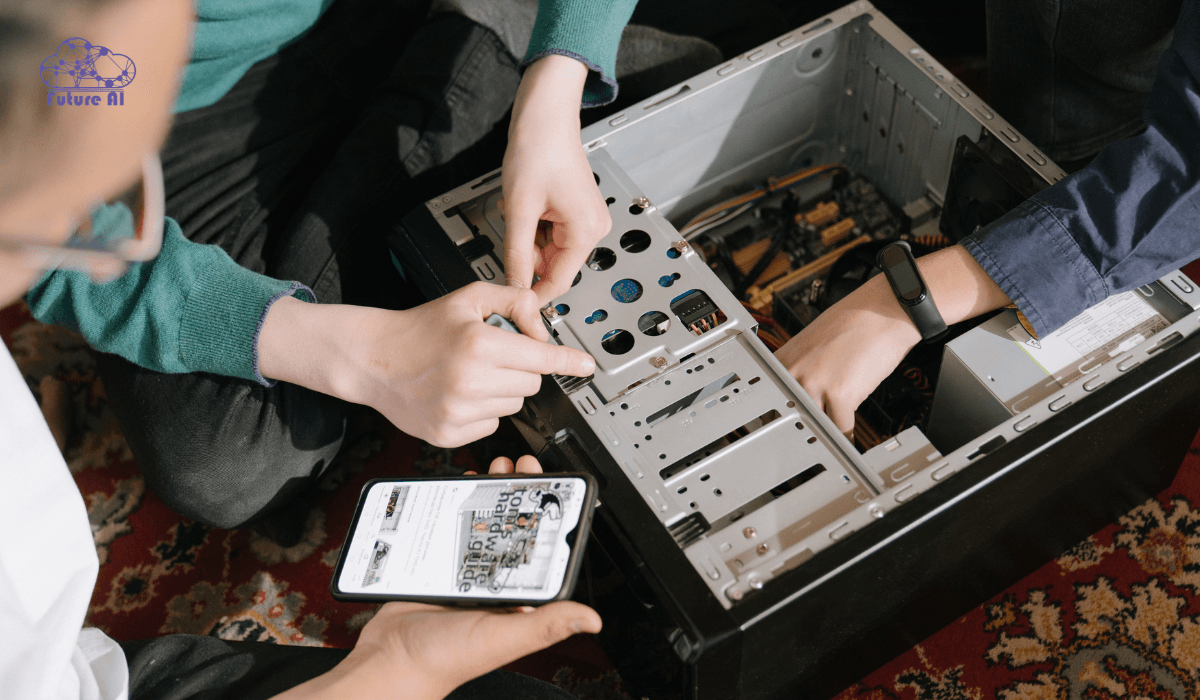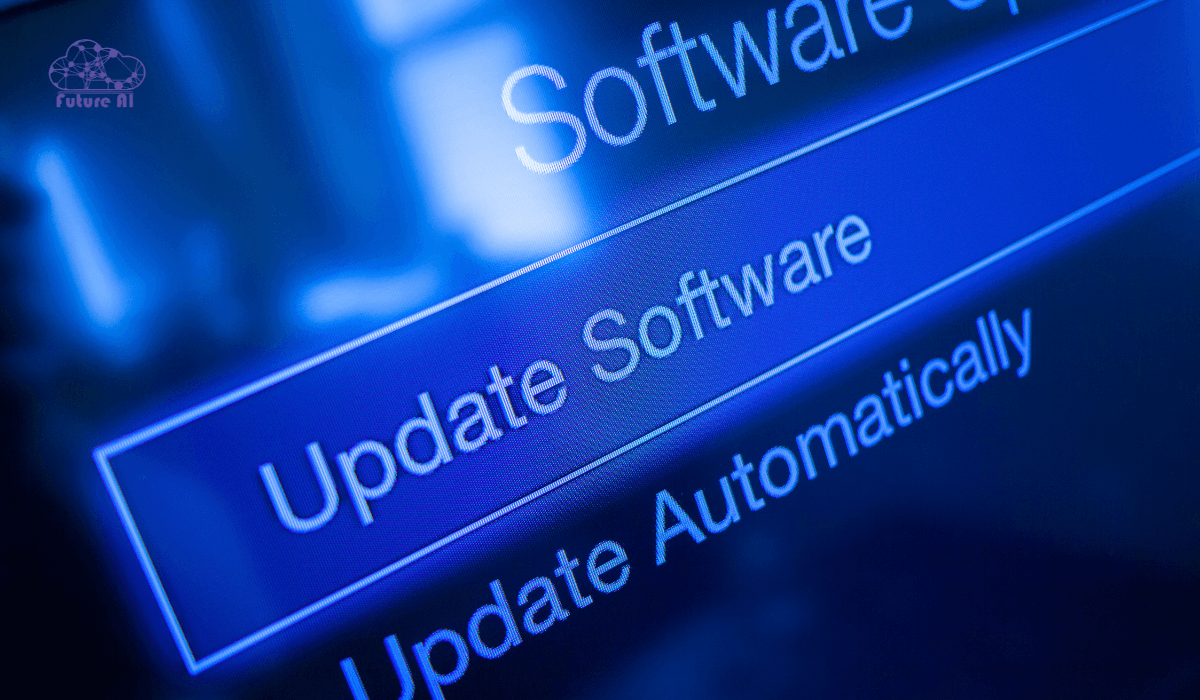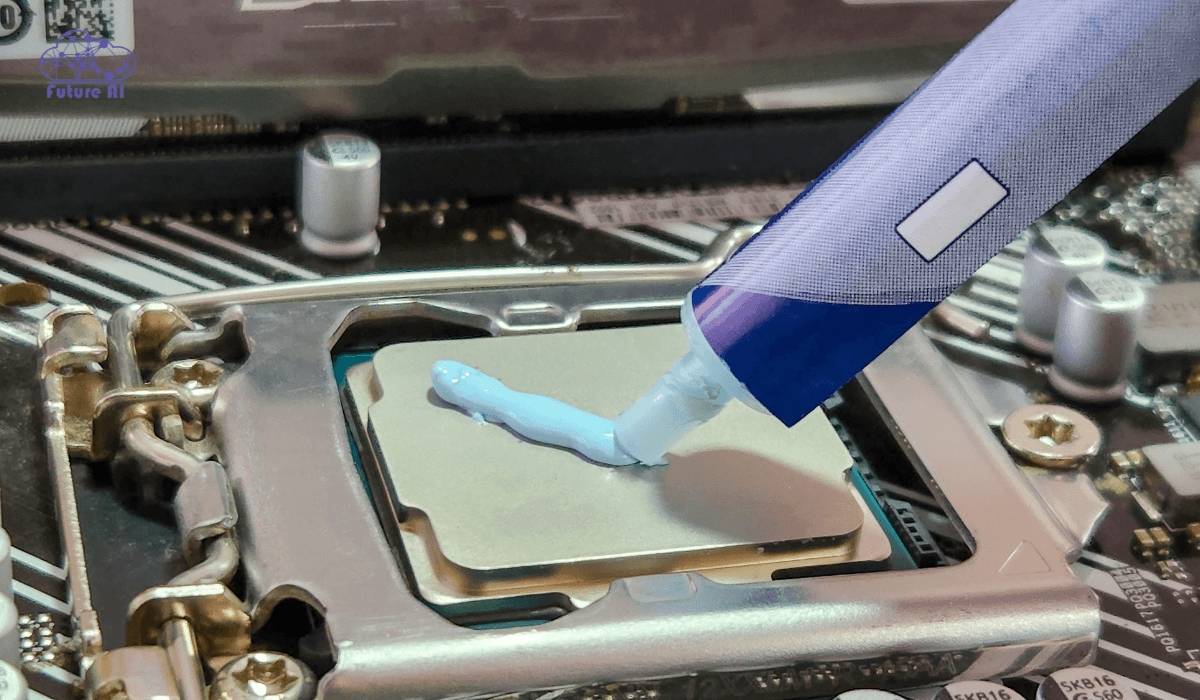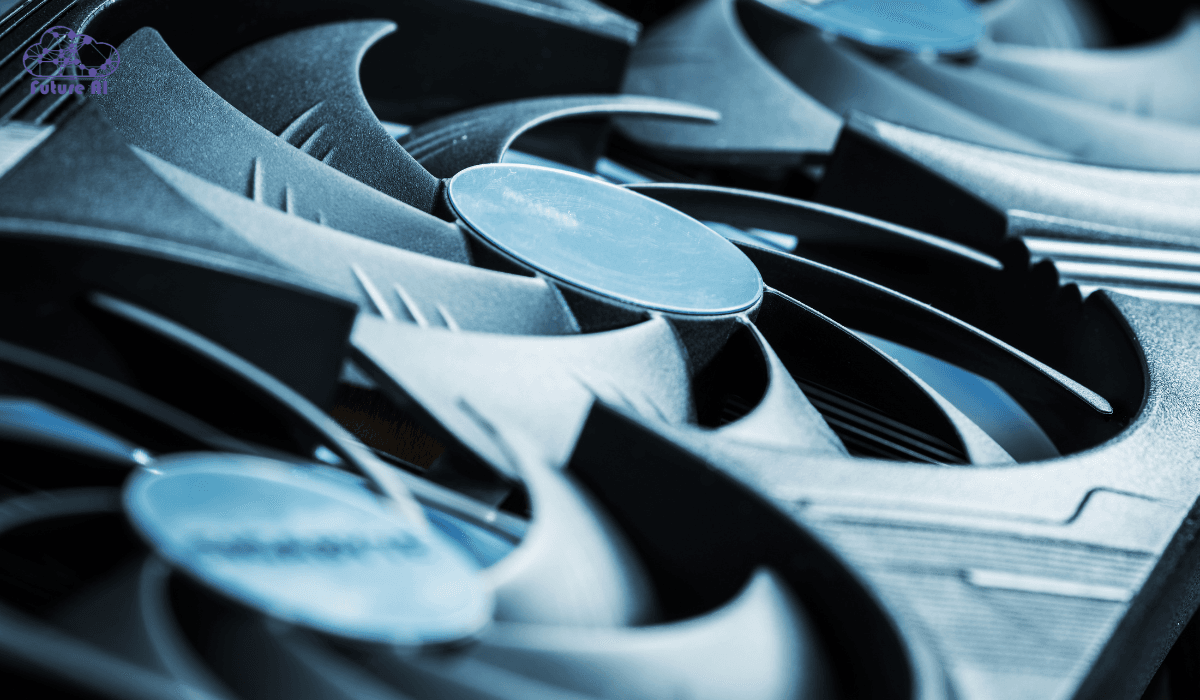Why Is Your Laptop CPU at 92°C When Idle? Understanding the Causes and Solutions
Ever noticed your laptop feeling unusually warm even when you’re doing absolutely nothing on it? You open up Task Manager, and boom your CPU temperature is sitting at 92°C. No heavy apps, no gaming, just… idle. It’s frustrating and a bit scary.
You’re not alone.
Many users have reported this same issue, especially on aging laptops or systems that haven’t been maintained in a while. And while 92°C under full load might be acceptable for some laptops, hitting that temperature while doing next to nothing? That’s a red flag.
Why Should You Care?
High idle temperatures aren’t just annoying, they’re harmful too. Over time, excessive heat can shorten your CPU’s lifespan, throttle performance, or even lead to random shutdowns. It’s like leaving your car engine running hot while parked and eventually, something’s going to give.
Not Sure If 92°C Is Too Hot?
Understanding safe CPU temperatures is key to avoiding long-term damage. Check out our guide on safe CPU temps and effective cooling solutions to protect your laptop today.
This article walks you through what a normal idle temperature should look like and how to stable if your laptop CPU at 92°C while idle.
By the end, you’ll have a clear roadmap to cool things down and keep your laptop running smoother, longer.
Understanding Normal vs. High Idle Temperatures
What Is Considered a Normal Idle Temperature?
Let’s start with the basics: what’s actually normal when it comes to idle CPU temps?
For most laptops, idle temperatures typically range between 35°C to 55°C. These numbers can vary depending on:
- The CPU model and generation
- The laptop’s cooling system
- Room/environment temperature
- Background activity or running services
Here’s a quick reference table:
| CPU Type | Typical Idle Temp Range |
| Intel i3/i5/i7 (Ultrabooks) | 35°C – 50°C |
| Intel H-Series (High Power) | 45°C – 60°C |
| AMD Ryzen Mobile Series | 40°C – 55°C |
| Gaming Laptops (with GPUs) | 50°C – 60°C |
Idle doesn’t necessarily mean zero activity. Even at rest, your system might be indexing files, syncing cloud services, or running updates in the background but these processes shouldn’t push your CPU near boiling point.
When Should You Be Concerned?
If your laptop is sitting around 80°C to 95°C while idle, something isn’t right.
Here are some red flags that indicate abnormal CPU behavior at idle:
- Fan always running loudly (even with nothing open)
- Laptop feels hot to the touch on the keyboard or bottom
- Performance lags or stutters, especially during basic tasks
- Battery drains quickly despite low usage
- Unexpected shutdowns or restarts
A consistently high idle temp like 92°C means your laptop is either:
- Running background processes, you’re unaware of
- Dealing with a hardware issue (e.g., dust buildup or thermal paste degradation)
- Being throttled due to faulty drivers or firmware
Getting CPU Over Temperature Errors?
You're not alone and it's a warning you shouldn’t ignore. Discover the common causes, quick fixes, and prevention tips to stop overheating before it damages your system.
Coming up next: We’ll dig into why this might be happening and how to fix it. But first, let’s explore the top causes behind this alarming heat.
Why Is Your Laptop CPU at 92°C When Idle? Top 5 Reasons
Seeing your CPU at 92°C with nothing demanding running? That’s not normal and here’s why. Several underlying issues could be causing your laptop to overheat even when idle.
1. Dust Accumulation and Blocked Vents
One of the most common and overlooked culprits is dust.

Over time, dust builds up inside your laptop, especially around:
- Cooling fans
- Heat sinks
- Exhaust vents
This restricts airflow, meaning heat has nowhere to go. Your CPU keeps getting hotter, even if it’s not doing much. If your laptop feels unusually hot or the fan is always on, it might be time to clean it.
Tip: A can of compressed air can work wonders, but for deep cleaning, professional disassembly might be required.
2. Background Processes and Software Issues
Sometimes, the issue isn’t hardware, it’s hidden software tasks eating up your CPU.

Apps or services running in the background can include:
- Windows Updates
- Antivirus scans
- Cloud sync tools (e.g., Google Drive, OneDrive)
- Telemetry or diagnostic tools
Use Task Manager (Ctrl + Shift + Esc) or Activity Monitor (Mac) to spot CPU hogging processes. End unnecessary tasks or uninstall bloatware to bring temps down.
Look out for: High CPU usage by “System,” “Antimalware Service Executable,” or any app you don’t recognize.
3. Thermal Paste Degradation
Thermal paste sits between your CPU and its cooler, transferring heat away from the processor. Over time, it dries out, cracks, or loses effectiveness especially on laptops that run hot regularly.
Signs of degraded thermal paste:
- High idle and load temps
- Fan constantly spinning
- Uneven temperature spikes
If your laptop is older than 2–3 years, reapplying thermal paste (with a product like Arctic MX-4 or Noctua NT-H1) can dramatically reduce temps.

4. Faulty Cooling Systems
If your cooling system isn’t functioning properly, your CPU will suffer.

Symptoms of a failing cooling system:
- Fan not spinning or running at low RPM
- Clicking or buzzing sounds from inside the laptop
- Cooling pad dependency to stay cool
- Metal heat pipes feel cold even when temps are high
In this case, replacement fans or repairs may be necessary. Ignoring it could lead to permanent CPU damage.
5. BIOS and Firmware Settings
Yes, even your BIOS/UEFI settings can be a factor.
Some laptops have:
- Aggressive turbo boost settings enabled by default
- Undervolting or fan curves that aren’t optimized
- Outdated firmware that fails to manage thermal limits properly
Check your manufacturer’s website for BIOS updates and consider tweaking fan speed or disabling unnecessary features in the BIOS if you’re comfortable doing so.
Diagnosing the Problem
Before jumping to solutions, it’s crucial to identify what’s really going on under the hood. High idle temperatures often point to background issues, not necessarily hardware failure. Here’s how to diagnose it like a pro (even if you’re not one).
Monitoring Tools
To begin, you’ll need the right temperature monitoring software or tools that give you real-time data on what your CPU is doing.
Top Recommended Tools:
| Tool | Platform | Key Features |
| HWMonitor | Windows | Real-time CPU/GPU temp, fan speeds, voltage levels |
| Core Temp | Windows | Lightweight, accurate core-specific readings |
| Open Hardware Monitor | Windows | Open-source, includes load and clock speed |
| Intel Power Gadget | Windows/macOS (Intel CPUs) | Visual graphs for power, temp, and frequency |
| Macs Fan Control | macOS/Windows | Great for MacBooks, lets you control fan speed |
Tip: Always run these tools for at least 10–15 minutes to get a stable reading during idle and light load.
Interpreting Temperature Readings
Once you’re monitoring temps, the key is knowing what’s normal and what’s not.
Normal Idle CPU Temps by Type:
- Ultrabooks (Thin & Light): 40°C – 60°C
- Gaming Laptops: 45°C – 70°C
- Workstations: 35°C – 60°C
Concerning Idle Temps:
- Anything above 85°C at idle is a red flag especially if you’re not running heavy software.
What to Watch For:
- Constant 90°C+ temps even when idle
- Sudden temp spikes or drops (can indicate thermal paste or sensor issues)
- Fans spinning at high speed without reason
- High CPU usage shown alongside high temp
Pro Insight: Match the temperature readings with CPU load percentage. If your CPU is idling at 10% but hitting 92°C, that’s not normal, it indicates cooling failure, degraded paste, or BIOS mismanagement.
This diagnostic process helps you narrow down the root cause. Next, you can move into fixes with confidence rather than guesswork.
5 Effective Solutions to Lower Idle Temperatures
If your CPU is idling at 92°C, it’s more than just a nuisance, it’s a sign something’s wrong. Here are proven, practical solutions to bring those temperatures down safely and effectively.
1. Cleaning and Maintenance
Dust is the #1 silent killer of laptop cooling systems.
Step-by-Step Cleaning Guide:
- Shut down and unplug your laptop completely.
- Remove the back panel (if user accessible).
- Use compressed air to gently blow out dust from vents, fans, and heat sinks.
- For deeper cleaning, carefully wipe fan blades with a soft brush or Q-tip.
- Ensure all vents are unobstructed and airflow is not restricted.
If your laptop is under warranty, check manufacturer guidelines before opening it.
Your CPU Might Just Need a Deep Clean!
If your laptop is overheating even when idle, dust buildup could be the culprit. Follow our step-by-step guide to cleaning your CPU and give your system the breath of fresh air it desperately needs!
2. Managing Background Applications
Even if your laptop “looks” idle, it might be working behind the scenes.
What to Do:
- Open Task Manager (Windows) or Activity Monitor (macOS).
- Sort by CPU usage and identify apps hogging resources.
- Disable startup programs that aren’t essential (Windows: Task Manager > Startup tab).
- Consider uninstalling bloatware or unnecessary third party apps.
Expert Tip: Malware or crypto miners can run silently in the background and spike CPU usage that scan with trusted antivirus tools if you’re unsure.
3. Reapplying Thermal Paste
Thermal paste degrades over time, especially in older or heavily used laptops.
Signs You Might Need to Replace It:
- Laptop is more than 2–3 years old.
- High temps persist after cleaning and software fixes.
- CPU temp spikes rapidly under minor load.
How to Replace Thermal Paste:
- Disassemble the cooling assembly (heatsink/fan).
- Clean old paste from the CPU and heatsink using isopropyl alcohol and lint-free cloth.
- Apply a small amount (pea-sized) of high-quality thermal paste (e.g., Arctic MX-6).
- Reassemble and test temps again.
If you’re not confident in doing this yourself, seek a professional technician.
Thermal Paste Could Be the Problem!
Over time, thermal paste dries out and loses effectiveness, causing your CPU to overheat. Learn how to safely remove and reapply thermal paste in our guide to help bring those temps back down.
4. BIOS Updates and Settings Optimization
Outdated firmware can mismanage voltage and fan curves, leading to heat issues.
How to Optimize:
- Visit your laptop manufacturer’s support page.
- Download the latest BIOS or UEFI firmware update.
- Follow the exact update instructions otherwise improper updates can brick your system.
- After updating, access BIOS settings:
- Set fan mode to performance or full speed.
- Disable Intel Turbo Boost (optional, reduces temps by limiting max frequency).
- Ensure CPU power management is enabled.
5. Using Cooling Pads and External Solutions
Sometimes, a little external help goes a long way.
Cooling Pad Advantages:
- Elevates the laptop to improve airflow.
- Provides active cooling via USB powered fans.
- Can lower idle temps by 5–10°C in well-ventilated environments.
Other External Tips:
- Use your laptop on hard, flat surfaces (avoid beds/couches).
- Consider an external fan vacuum cooler for gaming laptops.
Look for cooling pads with adjustable fan speed and support for your laptop’s size.
These solutions cover both quick fixes and more advanced interventions. In many cases, a combination of cleaning, thermal paste, and background app management can reduce idle temps dramatically often by 15–30°C.
Preventative Measures for Long-Term Thermal Management
While fixing high idle temperatures is important, preventing them in the first place is even better. Here’s how to maintain healthy thermal performance over time and extend your laptop’s lifespan.
Regular Maintenance Schedule
Just like your car, your laptop needs periodic care.
Best Practices:
- Every 2–3 months: Use compressed air to clean vents and fan intakes.
- Every 6–12 months: Open the chassis (if possible) for deep cleaning.
- Every 2–3 years: Reapply thermal paste if usage is heavy or temps start creeping up.
- Monthly: Check for BIOS/firmware updates and driver patches.
Set reminders or calendar events so you don’t forget these maintenance intervals.
Optimal Usage Practices
Your everyday habits can make a big difference in thermal performance.
Usage Tips for Better Cooling:
- Place your laptop on hard, flat surfaces (avoid soft beds, pillows, or laps).
- Use a laptop stand or cooling pad to elevate and improve airflow.
- Avoid using the laptop under direct sunlight or in hot environments.
- Close the lid or shut it down when not in use, idle doesn’t always mean “cool.”
- Don’t block the rear or side vents with accessories or walls.
Keeping internal temperatures low not only improves performance but also slows down wear on critical components like the CPU and battery.
By sticking to a consistent cleaning routine and using your laptop mindfully, you can avoid thermal throttling, noisy fans, and early hardware failure. It’s all about creating a cooling friendly environment for your system to thrive.
Expert Insights & Community Feedback
When it comes to unexplained high CPU temperatures especially during idle, both professionals and everyday users have a lot to say. This section gathers real world opinions, expert advice, and proven fixes from trusted sources and tech communities.
What the Experts Say
Thermal engineers and system builders agree on a few key points when diagnosing high idle temps:
- Thermal Paste Deterioration is Often Overlooked
According to multiple PC hardware analysts, including experts featured on Tom’s Hardware and Gamers Nexus, worn-out thermal paste is a common culprit in laptops over 2–3 years old especially if the device has never been repasted. - Fan Profiles & BIOS Settings Can Be Misconfigured
Tech reviewer Dave2D has pointed out in several laptop reviews that manufacturer BIOS defaults sometimes favor silence over cooling, keeping fans too quiet until temps reach dangerous levels. Tuning these settings can dramatically drop idle temps. - Windows Processes Can Be Hidden Heat Sources
Performance engineers at Intel note that modern CPUs may ramp up power usage due to rogue background services like Windows Update, Malware Scanners, or third-party software constantly polling hardware sensors.
Community Feedback: Reddit, Linus Tech Tips, and More
Across forums, users have diagnosed and resolved high idle temps with both standard and creative solutions:
- Reddit – r/techsupport / r/laptops
Users commonly report that disabling Windows indexing, removing pre installed bloatware, and performing a clean Windows install have led to idle temp drops of 10–20°C. - Linus Tech Tips Forums
Community members often recommend tools like ThrottleStop to monitor and undervolt CPUs. Undervolting (with caution) is frequently cited as a safe and effective method to reduce idle temps, especially on Intel based laptops. - YouTube Communities
Popular tech YouTubers have shown that even premium laptops from Dell, HP, and ASUS can idle hot due to aggressive turbo boost settings, which can be tuned down using Intel XTU or BIOS settings.
Real Insight, Real Fixes
The consensus? High idle CPU temperatures are usually fixable without hardware replacement. With the right mix of cleaning, software tweaks, and a better understanding of what’s running in the background, most users report significant improvements in just a few hours.
“My CPU was idling at 90°C for months turned out to be a bad thermal paste job from the factory. Reapplied it, and now it stays under 45°C.”
— Reddit User, r/laptops
Common Queries – Laptop CPU at 92°C When Idle
CPU 92 Degrees – Is It Normal or Too Hot?
A CPU temperature of 92°C is considered high, especially when the laptop is idle or under light use. While modern CPUs can technically handle temperatures up to 100°C, sustained heat above 90°C can reduce lifespan, cause thermal throttling, and indicate poor cooling.
If your CPU regularly reaches 92°C, it’s worth checking for dust buildup, aging thermal paste, or background tasks consuming CPU power.
2. Laptop CPU 90 Degrees While Gaming – Should You Be Concerned?
It’s not unusual for laptop CPUs to reach 90°C during intensive gaming, especially in slim or budget gaming laptops like the Acer Nitro 5 or ASUS TUF series.
However, it shouldn’t stay at that level constantly. If the CPU hits 90°C and then quickly cools down after load drops, you’re likely okay. Still, consider undervolting, using a cooling pad, or adjusting in game settings to help manage thermals better.
3. Acer Nitro 5 CPU 92 Degrees – Is This Normal?
The Acer Nitro 5 is known to run hot under load. Users frequently report CPU temps in the 90–95°C range while gaming or during heavy tasks. While the system is designed to handle this, it’s still on the high side.
Cleaning the fans, repasting the CPU with high quality thermal paste, enabling CoolBoost in Acer’s PredatorSense, or applying a modest undervolt can help reduce temperatures.
4. Is 92 Degrees Hot for a GPU?
Yes, 92°C is hot for a GPU especially if it’s sustained. Most modern GPUs (NVIDIA or AMD) are designed to throttle or boost fan speeds around 85–90°C to protect themselves.
If your GPU consistently hits 92°C, check case airflow, fan curves, and ensure there’s no dust clogging the heatsink. For laptops, using an external cooling pad can help bring this down.
5. CPU 90 Degrees on Startup – What Could Be Wrong?
If your CPU is hitting 90°C immediately on startup, that’s a red flag. Common causes include:
- Poor contact between the heatsink and CPU
- Dried-out thermal paste
- A fan that isn’t spinning at boot
- Malware or rogue startup applications
- BIOS misconfigurations
Check your system with monitoring tools (like HWMonitor or Core Temp), enter BIOS to review fan speeds, and inspect cooling hardware. If you’re comfortable, consider reapplying thermal paste.
6. Laptop CPU 90 Degrees Idle – Is That Normal?
No, 90°C while idle is abnormally high. Idle temperatures should ideally range from 35°C to 55°C, depending on room temperature and laptop model. If you’re seeing 90°C without any significant load, it likely points to:
- Dust or dirt inside the laptop
- Degraded thermal paste
- Background apps using CPU
- Failing fan or heat pipe
Act quickly prolonged idle heat can damage components.
7. CPU Running at 90 Degrees While Gaming – Safe or Not?
90°C under gaming load is borderline but not immediately dangerous. Many modern laptop CPUs are engineered to operate safely at high temps. However, consistent exposure to 90°C+ can cause thermal throttling and long term wear. If possible:
- Use a cooling pad
- Elevate the rear of the laptop
- Close background programs
- Enable high performance fan profiles in BIOS or OEM software
8. CPU Hitting 100 Degrees While Gaming – Time to Panic?
Yes, 100°C is the absolute upper limit for most CPUs, and hitting this consistently during gaming is not healthy. The CPU will throttle performance to cool itself down, which can cause lag or stuttering. Causes might include:
- Old thermal paste
- Dust blocked fans
- Inefficient thermal design
- Too much overclocking or power limits
Solution: Clean your cooling system, repaste the CPU, or undervolt the processor using software like Intel XTU or ThrottleStop (if supported).
Conclusion
High CPU temperatures during idle are not normal and can indicate underlying issues such as dust buildup, software glitches, or hardware malfunctions.
- Regularly clean your laptop’s internals.
- Monitor background processes.
- Ensure BIOS and drivers are up-to-date.
- Consider professional servicing if problems persist.
Stay proactive with your laptop’s health. Subscribe to our newsletter for more tech insights and maintenance tips.